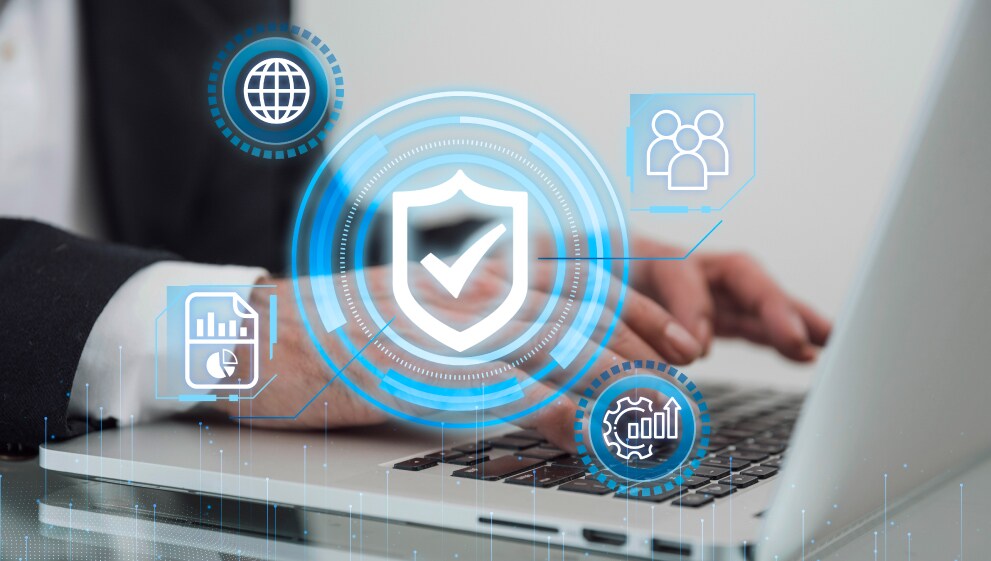The debate over which operating system reigns supreme—Linux, Windows, or macOS—is as enduring as it is crucial. Each OS brings its strengths to the table, from Linux’s open-source resilience and Windows’ widespread accessibility to macOS’s integration and elegant security features.
Choosing a secure OS isn’t just about personal preference; it’s about safeguarding your data and privacy in an increasingly interconnected world. Understanding the nuances of these platforms and which operating system is more secure can empower users to make informed decisions that prioritize digital safety without compromising usability.
Factors Influencing OS Security
The choice of operating system (OS) plays a pivotal role in safeguarding personal and organizational data. Several critical factors influence the security robustness of OS platforms such as Linux, Windows, and macOS.
These factors encompass architectural design, proactive security measures, patch management, and user privacy protocols, all of which contribute to creating a secure computing environment tailored to diverse user needs.
- Architecture: The fundamental design and underlying structure of an OS determine its susceptibility to vulnerabilities.
- Security Updates: Regular updates and patches are crucial for addressing newly discovered security flaws and strengthening defenses.
- Built-in Security Features: Features like firewalls, antivirus integration, encryption tools, and sandboxing enhance the OS’s innate security capabilities.
- Threat Response: Timely response to emerging cyber threats through proactive monitoring and rapid mitigation strategies is essential.
- Privacy Protection: Policies and mechanisms that safeguard user privacy, data encryption standards, and access control measures contribute significantly to overall OS security.
Security Features Comparison
When choosing an operating system (OS), understanding its security features is paramount in ensuring your digital safety. This comparison explores the security offerings of Linux, Windows, and macOS, highlighting their unique strengths in safeguarding user data and defending against cyber threats.
Linux Security Features
Linux is renowned for its robust security architecture, bolstered by:
- Open-source Vigilance: Constant scrutiny by a global community enhances security
- Customizability: Tailor security settings to specific needs
- Package Management: Centralized repositories for secure software installation
- Permissions System: Granular control over user privileges
Windows Security Features
Windows prioritizes security with features including:
- Windows Defender: Integrated antivirus and real-time protection
- SmartScreen: Protection against malicious websites and downloads
- Firewall: Built-in firewall for network security
- BitLocker: Drive encryption for data protection
macOS Security Features
macOS is the best OS for MacBook. It ensures security through:
- Gatekeeper: Controls app installation to prevent malware
- FileVault: Full-disk encryption for data confidentiality
- Sandboxing: Limits app privileges to prevent system access
- Privacy Controls: Enhanced privacy settings for user data protection
Why Linux is Often Considered More Secure Than Windows?
Linux has earned a reputation for robust security measures that set it apart from other operating systems. Here’s why Linux is frequently regarded as more secure than Windows:
- Open-source Vigilance: Continuous scrutiny and contributions from the global open-source community enhance security.
- Customizability: Users can tailor security settings and configurations to suit specific needs, minimizing vulnerabilities.
- Stable Architecture: Linux’s Unix-like architecture inherently prioritizes stability and security.
- Package Management: Centralized repositories and dependency management systems ensure secure software installation and updates.
Security Considerations for Windows
Windows, the most widely used desktop OS, faces unique security challenges and advancements. Here are the key considerations:
- Security Challenges: Windows’ popularity makes it a prime target for cyber attacks, necessitating robust defenses.
- Advancements: Continuous improvements include integrated security features like Windows Defender and SmartScreen, bolstering protection against malware and phishing.
- Patch Management: Regular updates address security vulnerabilities and strengthen system defenses.
- Firewall and Encryption: Built-in firewall and BitLocker drive encryption enhance data security.
macOS: Security Strengths and Weaknesses
macOS is renowned for its intuitive interface and strong security foundations. Here’s an overview of macOS’s security features, strengths, and areas of consideration:
- Gatekeeper: Controls app installation to prevent unauthorized software.
- FileVault: Full-disk encryption ensures data confidentiality.
- Sandboxing: Limits app permissions to prevent system-wide access.
- Privacy Controls: Enhanced privacy settings protect user data.
- Popularity and Target: While macOS traditionally faces fewer malware threats than Windows, its increasing popularity makes it a growing target for cyber attacks.
Comparative Analysis: Which OS is Most Secure?
When evaluating the security of operating systems—Linux, Windows, and macOS—several critical metrics come into play, including threat resistance, performance impact, and user practices. Here’s an in-depth comparison based on these security metrics:
Threat Resistance
- Linux: Benefits from its open-source community, which quickly identifies and patches vulnerabilities.
- Windows: Regular updates and integrated security tools like Windows Defender enhance threat detection and mitigation.
- macOS: Utilizes sandboxing and encryption to protect against malware and unauthorized access.
Performance Impact
- Linux: Known for efficiency and minimal performance impact due to lightweight distributions.
- Windows: Offers robust performance with occasional updates impacting system performance.
- macOS: Balanced performance with optimized hardware integration.
User Practices
- Linux: Users can customize security settings and benefit from community-driven best practices.
- Windows: Requires proactive measures such as regular updates and antivirus software to maintain security.
- macOS: Benefits from Apple’s ecosystem with integrated security features, requiring user awareness for optimal protection.
How Quick Heal Enhances Security on Windows, and macOS Platforms
Quick Heal provides robust security solutions to enhance protection on both Windows and macOS platforms. Here’s an overview of Quick Heal’s key features and enhancements:
- Advanced Antivirus Protection: Quick Heal’s antivirus engine offers real-time scanning and proactive detection of malware, ransomware, and other threats, ensuring comprehensive protection against malicious software.
- Firewall Protection: Built-in firewall capabilities monitor network traffic and prevent unauthorized access to your system, enhancing overall network security.
- Web Security: Secure browsing features such as Safe Banking and Web Security block malicious websites and phishing attempts, safeguarding your online transactions and sensitive information.
- Data Protection: Encryption features and tools like Secure Delete and Data Theft Protection ensure the security and confidentiality of your sensitive data, protecting against unauthorized access and data breaches.
- Cross-Platform Compatibility: Quick Heal’s solutions optimize system performance while offering robust security measures, making it a reliable choice for users seeking comprehensive protection across different operating systems.
Secure Your OS with Quick Heal
Choosing the most secure OS—whether Linux, Windows, or macOS—involves weighing various security features and considerations. Understanding your specific security needs, such as threat resistance, performance impact, and user practices, is crucial in making an informed decision.
By considering these factors and leveraging security solutions like Quick Heal, you can enhance your digital safety significantly. Stay informed, stay protected, and choose a software that best aligns with your security priorities and computing habits.
Related Products:
Quick Heal Total Security
Quick Heal Total Security for Mac
Quick Heal AntiVirus for Server


